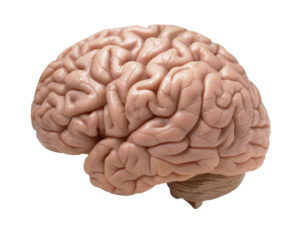 In the last few years some people have raised the issue of whether subconcussions in chidren, teenagers, and adults playing football also leads to brain changes similar to concussions. Subconcussions are head impacts that aren't as strong as concussions, but they routinely happen to players in football games and practice. Research says YES - worrying brain changes are occurring from subconcussions, but long-term effects from them are currently unknown. Earlier research found that the brains of high school football players (who had only received head impacts during the season) don't fully heal during the off-season when football is not played. (More related posts on subconcussions: high school players, football before age 12, teen football players, soccer players). The research discussed below is ongoing research. From Medical Xpress:
In the last few years some people have raised the issue of whether subconcussions in chidren, teenagers, and adults playing football also leads to brain changes similar to concussions. Subconcussions are head impacts that aren't as strong as concussions, but they routinely happen to players in football games and practice. Research says YES - worrying brain changes are occurring from subconcussions, but long-term effects from them are currently unknown. Earlier research found that the brains of high school football players (who had only received head impacts during the season) don't fully heal during the off-season when football is not played. (More related posts on subconcussions: high school players, football before age 12, teen football players, soccer players). The research discussed below is ongoing research. From Medical Xpress:
Subconcussions cause changes to brain, study of college football players shows
The average college football player receives about 1,000 head impacts each season. Some of these hits result in concussions – traumatic head injury that results in short-term, and possibly even long-term, damage to brain function. But what are the effects of the hundreds of routine head impacts, called subconcussions, that occur during a four-month season of practice sessions and games?
A University of Virginia neuroscience Ph.D. candidate is trying to find out. Using functional magnetic resonance imaging – fMRI – Bryson Reynolds studied the brain activity and connectivity of a group of healthy college football players, before and after a competitive season, and compared the data to brain-activity scans of healthy male college soccer and lacrosse players, and to a control group of college male non-athletes.
He found that the football players experienced a disruption in "local functional connectivity" – the way different areas of the brain communicate with each other – while soccer and lacrosse players' brain activity did not noticeably change after a competitive season. The result for the soccer and lacrosse players was comparable to the control group, which also displayed no brain activity changes during a four-month period. "This is an important discovery regarding the football players because a similar disruption of local functional connectivity has also been found in athletes diagnosed with a concussion," Reynolds said.
"We have no ideas how these subconcussions might be affecting players' brains, but we are seeing concussion-like changes to the brain, at least in the short term," Reynolds said. "This does not necessarily mean that something bad is happening to the brain, but clearly some changes are occurring over the course of a season."
Neurologists know that concussions cause headaches, dizziness and sometimes loss of consciousness, and may also increase the risk for developing serious long-term neurodegenerative disorders, such as Alzheimer's disease, amyotrophic lateral sclerosis and chronic traumatic encephalopathy.
In other words, repeated head impacts over the course of a season, or perhaps a career, may be affecting the brain in ways not yet understood, but possibly similar to actual concussions. Reynolds' study did not include players who suffered concussions, and the subconcussions he observed were not causing perceptible problems or symptoms for the players. But the disruptions in brain activity recorded in the fMRI scans may indicate subtle changes that could be part of a larger picture.
 For years it has been known that former professional football players are at risk for chronic traumatic encephalopathy (CTE). A recent survey of almost 2000 former NFL football players found that 34% believe they have CTE. This is a third of former players! There is no cure or treatment for CTE.
For years it has been known that former professional football players are at risk for chronic traumatic encephalopathy (CTE). A recent survey of almost 2000 former NFL football players found that 34% believe they have CTE. This is a third of former players! There is no cure or treatment for CTE.
 In the last few years some people have raised the issue of whether subconcussions in chidren, teenagers, and adults playing football also leads to brain changes similar to concussions.
In the last few years some people have raised the issue of whether subconcussions in chidren, teenagers, and adults playing football also leads to brain changes similar to concussions.